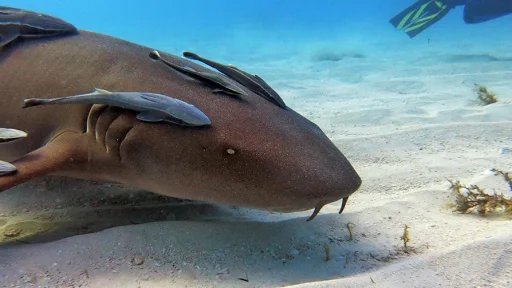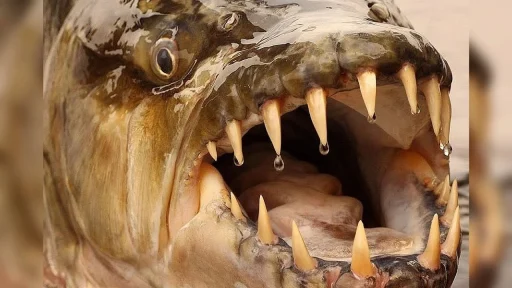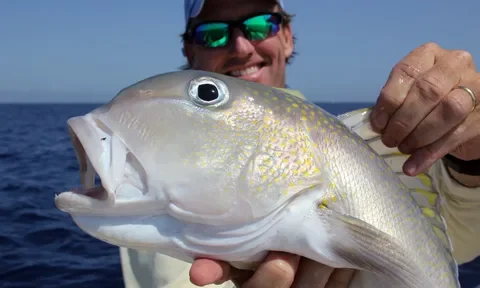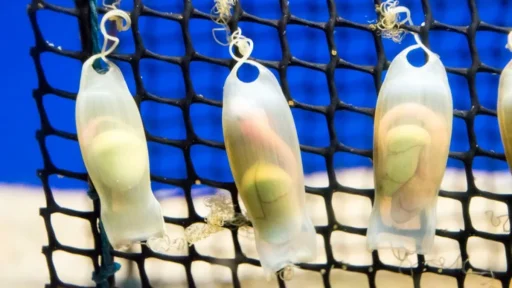Beneath the shimmering surface of our oceans lies a realm teeming with life—some familiar, some downright mysterious. Among the countless creatures that dwell there, the Colonel Fish AKA Colonel Trout stands apart, both literally and figuratively. Its striking appearance and extraordinary adaptations have made it the subject of fascination for marine biologists and ocean enthusiasts alike. But what makes the Colonel Fish so captivating? Why does it command such attention? Let’s plunge into the depths and uncover the secrets that make this marine marvel so distinctive.
The Origins and History of Colonel Fish
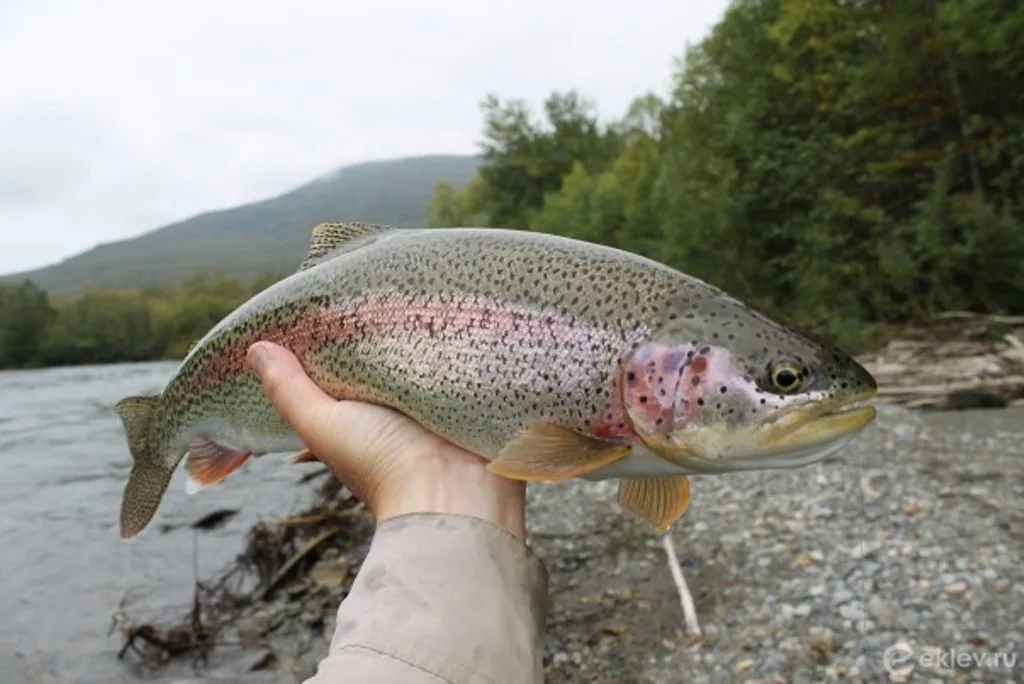
Discovered in the late 19th century, the Colonel Fish (Pseudopercis colonialis) didn’t just swim into history; it strutted, draped in regal patterns that looked as though nature had dressed it in a ceremonial uniform. Its scientific name reflects this royal aura—colonialis hints at the colonized or ‘arranged’ pattern of its scales, resembling military regalia. Since that day of discovery, the Colonel Fish has intrigued researchers not just for its looks but also for its behavior, which borders on the enigmatic.
Physical Characteristics of Colonel Fish
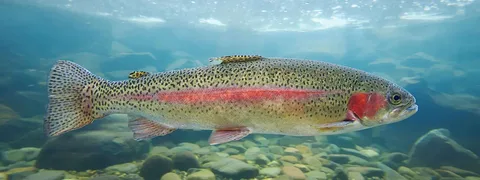
Let’s talk size—this isn’t your average fish. Measuring between 30 and 50 centimeters, the Colonel Fish is built to stand out. Slender yet muscular, with an elongated body designed for swift navigation, it’s more than just a pretty face. Its dorsal fins, sharp and well-defined, and its symmetrically structured body allow it to glide through the water like a general commanding troops, navigating the battlefield with precision and grace.
Coloration and Camouflage
Now, here’s where things get even more interesting. The Colonel Fish is a master of disguise, sporting hues of blue, green, and brown that make it virtually invisible against coral reefs and rocky seabeds. Imagine a chameleon, but for the ocean—it blends so seamlessly into its environment that even the sharpest predators can be fooled. It’s a survival strategy that’s as elegant as it is effective. While most fish rely on speed or sheer numbers, the Colonel Fish hides in plain sight, waiting to ambush its prey.
Fins and Movement
Speed and stealth—those are the Colonel Fish’s superpowers. Its fins are engineered for agility, particularly the pectoral and dorsal fins, which can flex and pivot to allow for sudden bursts of speed. Picture a jet fighter taking off at the blink of an eye; that’s the kind of swiftness we’re talking about. And its tail? A finely-tuned rudder, keeping it perfectly balanced as it weaves through narrow spaces in the coral, navigating its watery world with the ease of a seasoned explorer.
Habitat and Distribution
Where can one find this elusive creature? The Colonel Fish calls the tropical and subtropical waters home, thriving in coral reefs that offer both shelter and sustenance. These vibrant ecosystems provide the perfect environment for the Colonel Fish to disappear into crevices, ambush prey, and avoid larger predators. Most notably, it is found in the Pacific and Indian Oceans, but it doesn’t confine itself to the shallows. This fish is known to venture down to depths of up to 200 meters, where the sunlight barely penetrates.
Depth Preferences
While adaptable, the Colonel Fish tends to prefer the middle and lower sections of coral reefs. Here, it finds a sweet spot—a balance between the protective cover of the coral and the light that filters down from the surface. And it’s not just light; the pressure at these depths plays a role too. The Colonel Fish is built to withstand these fluctuations, making it as comfortable at 10 meters as it is at 200.
Diet and Feeding Behavior
A carnivore by nature, the Colonel Fish has a refined palate—small fish, crustaceans, and invertebrates make up its menu. Don’t let its graceful appearance fool you; this fish is a predator. It relies on stealth and precision, lying in wait for the perfect moment to strike. With a quick flick of its fins and a sharp lunge, it locks onto its prey with jaws equipped to ensure nothing escapes.
Symbiotic Relationships
In the underwater world, relationships are everything, and the Colonel Fish is no stranger to this. It frequently forms symbiotic partnerships with other marine species, such as cleaner shrimp. While these tiny creatures rid the Colonel Fish of parasites, the shrimp receive protection in return. It’s a win-win situation, a delicate dance of mutual survival that highlights just how interconnected marine life can be.
Reproduction and Life Cycle
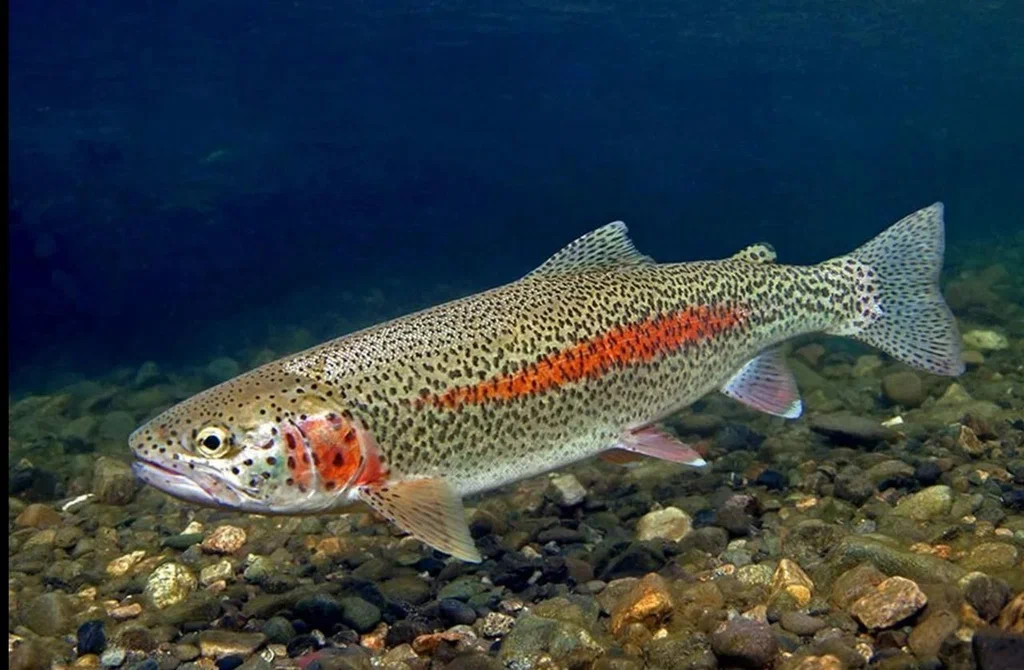
When it comes to reproduction, the Colonel Fish doesn’t skimp on spectacle. Males put on a show—flaring their vibrant fins and engaging in intricate swimming patterns to court the females. Once a mate is secured, the pair retreat to a secluded area of the reef, where the female lays her eggs. The male takes on the role of protector, guarding the eggs until they hatch, ensuring the next generation of Colonel Fish makes it into the world.
Conservation Status
As with many marine species, the Colonel Fish faces its share of challenges. Overfishing and habitat destruction, particularly the devastating loss of coral reefs, have placed its population at risk. The delicate ecosystems they rely on are under siege, and without them, the Colonel Fish’s future looks uncertain.
The Role of Climate Change
Climate change isn’t just a buzzword for the Colonel Fish—it’s a direct threat. Rising ocean temperatures and increasing instances of coral bleaching are wreaking havoc on their habitats. As coral reefs die, the Colonel Fish is forced to either adapt, migrate to deeper, more stable waters, or face a dwindling food supply. Some have already started this migration, seeking refuge where the water is cooler, and the reefs are still vibrant.
The Significance of Colonel Fish in Marine Ecosystems
The Colonel Fish isn’t just a solitary predator; it’s an integral part of the marine ecosystem. By controlling populations of smaller fish, it helps maintain the balance of the coral reefs. If left unchecked, these smaller species could overgraze on algae, disrupting the entire reef system. In this way, the Colonel Fish plays a pivotal role in the health and sustainability of its habitat.
Fun Facts About Colonel Fish
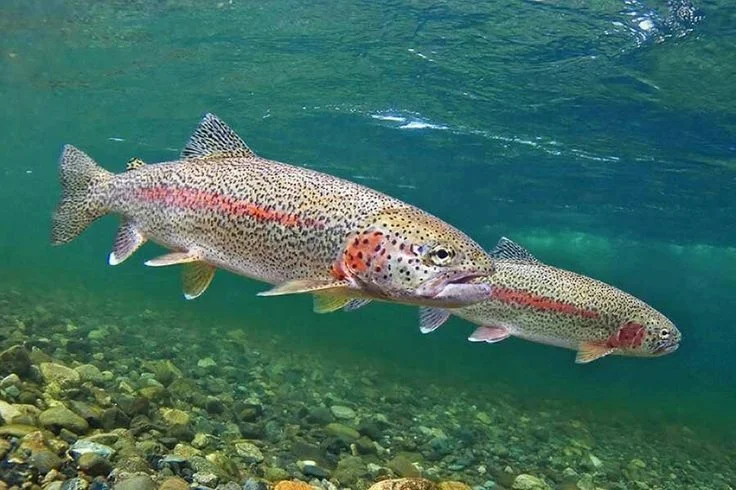
- The Colonel Fish earned its name for its regal appearance, resembling a uniformed officer standing at attention.
- In some cultures, it symbolizes resilience and strength, a fitting metaphor for its ability to thrive in harsh conditions.
- Ever the curious creature, the Colonel Fish is known to follow divers, sometimes even investigating their gear with playful curiosity.
How to Spot a Colonel Fish During a Dive
Spotting a Colonel Fish requires a keen eye. Look for subtle, darting movements near coral ledges or outcroppings. Though its camouflage makes it nearly invisible, its elongated shape and sharp movements are telltale signs. For those patient enough to wait and watch, the Colonel Fish may even reveal itself, darting out to capture an unsuspecting meal.
Conclusion
The Colonel Fish is a marine marvel—graceful, strategic, and vital to the health of coral reef ecosystems. As we continue to study its behaviors and adapt our conservation efforts, it’s clear that protecting this species is not just about saving a fish; it’s about preserving the intricate balance of marine life that depends on it.
FAQs
What makes Colonel Fish different from other fish?
Its unique coloration, camouflage, and symbiotic relationships distinguish it from the rest.
Is Colonel Fish endangered?
Not officially, but habitat loss and climate change are serious threats to its population.
How does climate change affect the Colonel Fish population?
Rising ocean temperatures and coral reef degradation are forcing the fish to seek new habitats, impacting its numbers.
Can I keep a Colonel Fish in an aquarium?
Colonel Fish are not suitable for home aquariums due to their specific habitat and dietary needs.
Where is the best place to see Colonel Fish in the wild?
Tropical coral reefs in the Pacific and Indian Oceans are the most common places to encounter them, especially in biodiverse regions.
Read more:
Dorado Fish Decoded: Unveiling the Secrets of This Ocean Acrobat
Grouper Fish: The Giant of the Reef and Its Crucial Ecological Role
TriggerFish: The Ocean’s Living Locks and How They Got Their Name


